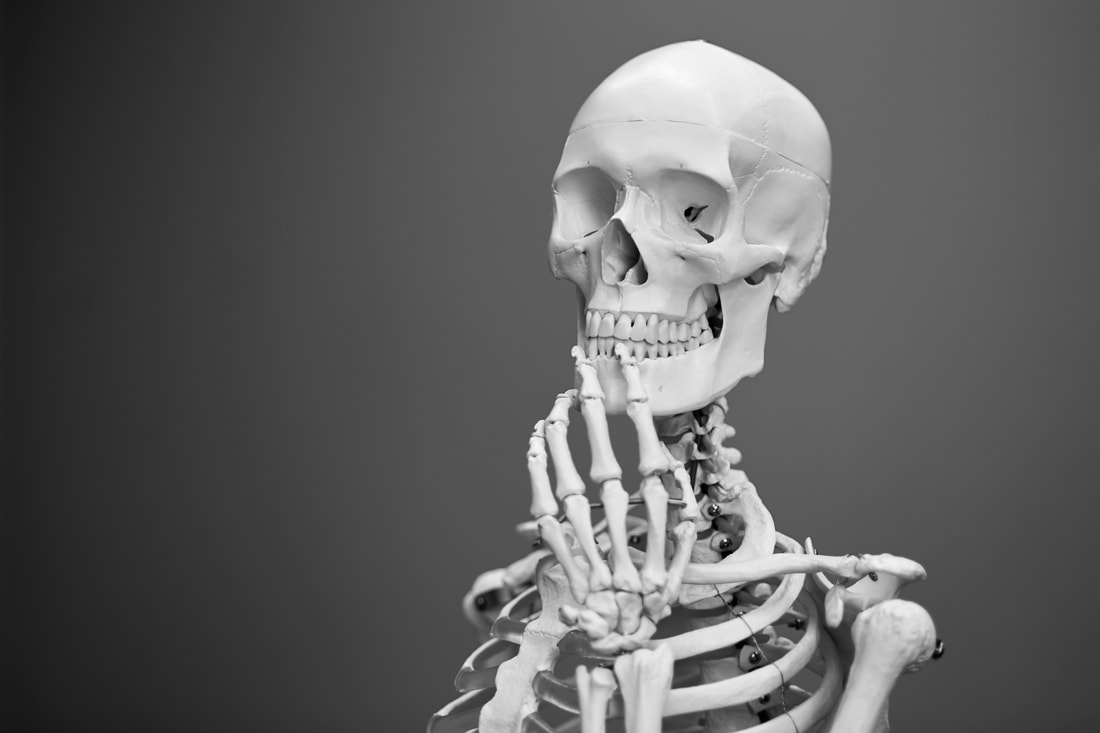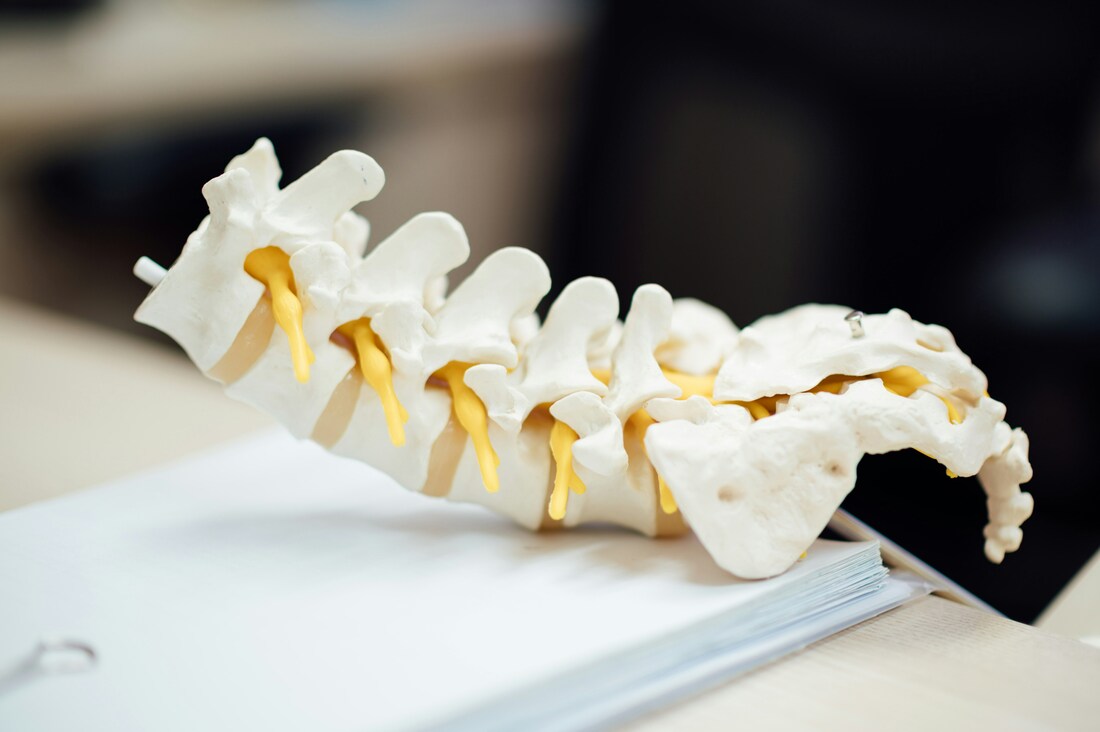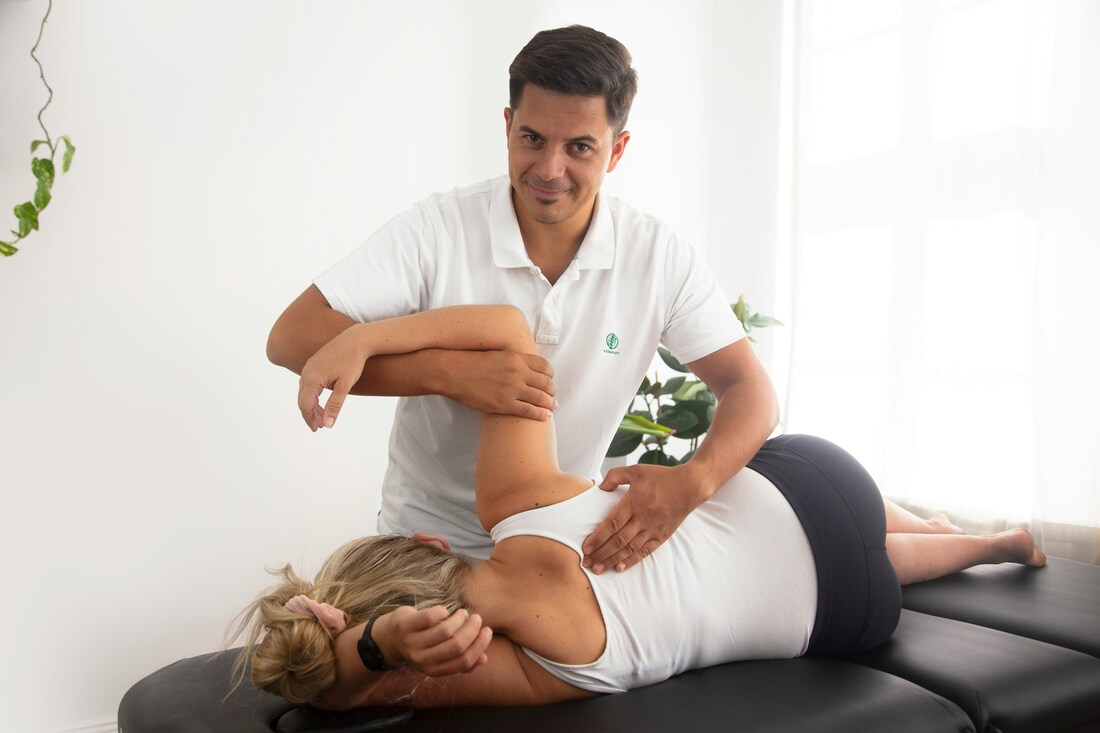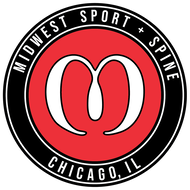|
Photo by Edward Muntinga Unless You Have Broken BonesBy Dr Khong Lamvichit March 17, 2025 3min Chiropractic adjustments are a popular treatment for back pain, neck pain, and musculoskeletal issues, but they may not be suitable for everyone. Here’s what to consider when determining if chiropractic care is right for you:
1. Ideal for Musculoskeletal Conditions: Chiropractic adjustments are especially effective for treating issues related to the spine, joints, and muscles. People with conditions such as sciatica, lower back pain, headaches, and joint dysfunction often find significant relief with chiropractic care. 2. Age Considerations: Chiropractic care can benefit individuals across various age groups. Chiropractors use gentle techniques for children, older adults, and those with limited mobility. However, treatment plans are tailored to ensure adjustments are appropriate and safe for each age group, focusing on low-force techniques if necessary. 3. Contraindications and Health Conditions: People with specific medical conditions may not be suitable candidates for chiropractic adjustments. Individuals with severe osteoporosis, spinal cancer, or a high risk of stroke should consult their physician before considering chiropractic care, as certain adjustments may not be advisable. 4. Alternative Techniques: Chiropractors can offer alternative, non-manipulative therapies such as soft tissue therapy, rehabilitation exercises, and lifestyle advice, making chiropractic care accessible even to those who may not benefit from traditional adjustments. 5. Consultation and Evaluation: Chiropractors conduct thorough assessments to determine the suitability of chiropractic adjustments for each patient. This ensures that treatment aligns with individual health needs, minimizing risks and enhancing the benefits of care. Chiropractic adjustments can be highly effective for many, but consulting with a chiropractic medical professional is essential to confirm if it’s the right choice for you. Photo by Katie Bernotsky Stay Safe The Chiropractic Way!By Dr Khong Lamvichit March 13, 2025 3min St. Patrick’s Day weekend in Chicago is a lively celebration filled with parades, parties, and the famous green-dyed Chicago River. However, with large crowds and alcohol consumption, safety should be a top priority. Follow these essential tips to ensure you enjoy the festivities without getting hurt.
1. Plan Your Transportation in Advance Avoid driving, as traffic congestion and road closures are common. Use public transportation, rideshare apps, or designated drivers to get around safely. The CTA and Metra offer special services during the weekend. 2. Drink Responsibly If you plan to drink, pace yourself and stay hydrated. Eat a full meal before consuming alcohol and alternate with water. Stick to a trusted group of friends to prevent unsafe situations. 3. Be Aware of Your Surroundings Large crowds can lead to pickpocketing or accidental injuries. Keep your belongings secure and stay alert in busy areas. Avoid confrontations and steer clear of aggressive behavior. 4. Dress for the Weather March weather in Chicago can be unpredictable. Wear comfortable shoes, dress in layers, and bring gloves or a hat if necessary. Cold temperatures and wet conditions can lead to slips and falls. 5. Know Emergency Contacts Save emergency numbers on your phone, including local police and hospitals. If attending the parade or events, identify first aid stations and exit routes. By following these safety tips, you can have a fun and injury-free St. Patrick’s Day weekend in Chicago! Photo by Toa Heftiba The Gentle TouchBy Dr Khong Lamvichit March 3, 2025 3min Chiropractic adjustments are generally not painful and are designed to provide relief from pain and discomfort. However, each patient’s experience may vary depending on their condition, pain tolerance, and the type of adjustment performed. Here’s what to expect during chiropractic adjustments:
1. Gentle Techniques: Chiropractors use controlled, gentle pressure when performing adjustments. These techniques aim to realign joints, relieve pressure on nerves, and restore proper function. Most patients experience a sense of relief or release after an adjustment, with minimal discomfort. 2. Popping Sounds Explained: Many people are concerned about the "popping" or "cracking" sound heard during adjustments. This sound is simply gas escaping from joint spaces as they realign, similar to the release when you crack your knuckles. The noise is harmless and usually doesn’t indicate any pain. 3. Post-Adjustment Soreness: Some patients may feel mild soreness after an adjustment, similar to what one might feel after a workout. This is a normal response as the body adjusts to realignment. The soreness typically subsides within 24-48 hours and can often be managed with hydration, gentle stretching, or applying ice. 4. Pain-Free Alternatives: For those concerned about pain, chiropractors can use alternative techniques like low-force adjustments, soft tissue therapy, or instrument-assisted adjustments to minimize discomfort. 5. Experienced Practitioners: Licensed chiropractors are trained to tailor adjustments based on patient needs, ensuring a safe and comfortable experience. Communicating any concerns beforehand can help the chiropractor choose the best technique. In summary, chiropractic adjustments are generally safe and not painful, offering a path to relief with minimal discomfort. Photo by Mathew Schwartz Think of How Complex Your Injury IsBy Dr Khong Lamvichit February 17, 2024 3min A chiropractic session typically lasts between 15 and 45 minutes, depending on the complexity of the patient’s needs and the specific treatments involved. Here’s what to expect in a standard chiropractic session:
1. Initial Consultation and Assessment: For first-time visits, chiropractic appointments may last closer to 45 minutes to an hour. This extended time allows the chiropractor to conduct a comprehensive assessment, including a review of the patient’s medical history, physical exam, and sometimes diagnostic tests like X-rays. This helps create a tailored treatment plan. 2. Routine Adjustments: Follow-up sessions for routine adjustments usually last between 10 and 20 minutes. During these sessions, the chiropractor performs spinal adjustments, joint manipulations, and other therapies aimed at relieving pain, improving alignment, and enhancing overall mobility. These shorter sessions are ideal for patients who require maintenance care or are following a prescribed treatment plan. 3. Therapeutic Exercises and Modalities: Some chiropractic sessions involve additional therapies such as massage, stretching exercises, ultrasound, or electrical stimulation. Including these can extend the session to around 30 to 45 minutes. These techniques enhance the benefits of spinal adjustments by relaxing muscles, reducing inflammation, and supporting recovery. 4. Patient Education: Chiropractors often spend a few minutes educating patients on lifestyle changes, ergonomic tips, or home exercises. This brief guidance is key for long-term results and helps prevent future injuries. In summary, a typical chiropractic session ranges from 15 to 45 minutes based on treatment complexity, with initial visits being longer for thorough assessment and follow-ups focused on maintenance and targeted care. Photo by CHUTTERSNAP Simply Put, It's SafeBy Dr Khong Lamvichit February 3, 2025 5min Chiropractic care is widely recognized as a safe, non-invasive treatment for a range of musculoskeletal issues, particularly when performed by licensed and trained chiropractors. Here’s why chiropractic care is considered safe and effective:
1. Non-Invasive Approach: Chiropractic care is a natural, drug-free treatment focused on spinal adjustments, joint manipulation, and therapeutic exercises. It does not involve surgery or medication, which minimizes the risk of side effects and promotes natural healing, making it a low-risk option for pain relief. 2. Highly Trained Practitioners: Chiropractors undergo extensive education and training, including anatomy, neurology, and biomechanics. This expertise allows them to accurately diagnose and treat issues like back pain, neck pain, and joint problems with precision. Licensed chiropractors follow strict protocols to ensure patient safety and adjust techniques based on individual needs. 3. Evidence-Based Care: Numerous studies support the safety and efficacy of chiropractic adjustments, particularly for conditions like lower back pain, tension headaches, and neck pain. These studies show that chiropractic care not only reduces pain but also improves overall mobility and quality of life. 4. Personalized Treatment Plans: Chiropractors create customized treatment plans that consider each patient’s unique health status, which adds a layer of safety by addressing specific conditions and limitations. These personalized plans reduce the risk of injury or adverse effects. 5. Minimal Side Effects: Side effects from chiropractic adjustments are generally mild, such as temporary soreness or stiffness, which usually resolve within 24-48 hours. Serious complications are rare, especially when treatment is performed by a qualified chiropractor. In conclusion, chiropractic care is a safe and effective option for managing pain and improving musculoskeletal health. Its non-invasive nature, minimal side effects, and focus on holistic healing make it an appealing choice for many seeking natural relief. Photo by Marc Zeman Chicago Chiropractic AdjustmentsBy Dr Khong Lamvichit January 20, 2024 5min Chiropractic care is a form of alternative medicine that focuses on the diagnosis and treatment of mechanical disorders of the musculoskeletal system, particularly the spine. Chiropractors use a variety of techniques to address these issues, including spinal adjustments, soft tissue manipulation, and lifestyle counseling. Here are seven reasons why you might consider seeing a chiropractor in Chicago:
Back Pain Relief One of the most common reasons people seek out chiropractic care is for relief from back pain. Chiropractors use a range of techniques to address the underlying causes of back pain, including misalignments in the spine, muscle tension, and joint dysfunction. By addressing these issues, chiropractic care can help reduce pain and improve mobility in the back. Neck Pain Relief Neck pain is another common issue that can benefit from chiropractic care. Like back pain, neck pain can be caused by misalignments in the spine, as well as tension in the muscles and joints. Chiropractors can use spinal adjustments, soft tissue manipulation, and other techniques to alleviate neck pain and improve range of motion. Headache Relief Chiropractic care can also be effective in treating headaches, including tension headaches and migraines. By addressing muscle tension and spinal misalignments, chiropractors can help reduce the frequency and intensity of headaches. Improved Posture Poor posture is a common issue that can lead to a range of musculoskeletal problems, including back pain, neck pain, and headaches. Chiropractors can help improve posture by addressing spinal misalignments and providing guidance on proper ergonomics and body mechanics. Increased Range of Motion Chiropractic care can also help improve range of motion in the joints and muscles. By addressing joint dysfunction and reducing muscle tension, chiropractors can help patients move more freely and comfortably. Sports Injury Treatment Chiropractors are often sought out by athletes for treatment of sports injuries. By using a range of techniques, including spinal adjustments, soft tissue manipulation, and exercise therapy, chiropractors can help athletes recover from injuries and improve their performance. If you're looking for a chiropractor in Chicago, be sure to choose a licensed and experienced professional who can provide personalized care to help you achieve your health and wellness goals. Photo by Khong Lamvichit Mechanical vs PhilosophyBy Dr Khong Lamvichit January 6, 2024 3min Mechanical chiropractors treat all restricted joints, muscles, tendons, ligaments, and use chiropractic adjustments as a tool to increase your mobility and performance; Philosophical chiropractors focus mainly on chiropractic adjustments to eliminate joint restrictions in your spine that could be causing pain in your body's systems.
In Chicago, as well as in other parts of the world, there are generally two types of chiropractors: philosophical chiropractors and mechanical chiropractors. Philosophical chiropractors focus solely on the alignment of the spine and the treatment of restrictions or misalignments. They believe that interference with the nervous system due to vertebral restrictions is the primary cause of disease and dysfunction in the body. Philosophical chiropractors typically use manual adjustment techniques to correct spinal restrictions, without incorporating other modalities or therapies into their treatment approach. Mechanical chiropractors incorporate other complementary therapies, even medical doctor referrals if needed with therapeutic modalities into their treatments. They may use a combination of spinal adjustments, soft tissue therapies, and nutritional counseling, among other techniques, to help their patients achieve optimal health and wellness. They treat all restricted joints, muscles, tendons, ligaments, and use chiropractic adjustments only as a tool to increase your mobility and performance. It's important to note that while there are different types of chiropractors, they all have the same goal: to help their patients achieve optimal health and wellness through non-invasive, drug-free approaches to care. Whether you choose to see a philosophical chiropractor or a mechanical chiropractor, be sure to choose a licensed and experienced professional who can provide personalized care to help you achieve your health goals. Photo by Dr Khong Lamvichit Start NowBy Dr Khong Lamvichit 5 mins As the new year approaches, many people are setting fitness goals to improve their health and physical abilities. One unique and transformative approach to fitness is Ido Portal’s movement training. This method emphasizes body awareness, strength, flexibility, and fluidity. If you’re curious about starting Ido Portal movement training for 2025, here’s a step-by-step guide to help you prepare.
Understand the Philosophy of Ido Portal MovementBefore jumping into the exercises, it’s essential to understand the philosophy behind Ido Portal’s movement system. It’s not just about fitness but about exploring your body’s potential through diverse movements. The training combines elements from gymnastics, martial arts, dance, and yoga. By understanding the "why" behind the movements, you’ll approach training with greater intention and focus. Assess Your Current Fitness LevelBegin by evaluating your current physical condition. Are you flexible? How strong is your core? Can you balance well? Understanding your starting point helps you tailor your preparation and set realistic goals. Ido Portal training can be intense, so knowing your limits will prevent injuries and build a solid foundation. Focus on Mobility and FlexibilityMobility and flexibility are critical components of Ido Portal’s training. Start incorporating stretches and mobility drills into your daily routine. Key areas to target include:
Build Strength GraduallyStrength is another pillar of Ido Portal training. Focus on bodyweight exercises such as push-ups, pull-ups, squats, and planks. These movements will prepare your body for more advanced skills like handstands and muscle-ups. Aim to train 3-4 times per week, gradually increasing the intensity as you progress. Develop Coordination and BalanceCoordination and balance are integral to mastering Ido Portal’s movements. Simple drills like standing on one leg or walking on a balance beam can significantly improve your stability. You can also try animal flow exercises, which mimic animal movements and challenge your coordination. Learn Basic Movement PatternsFamiliarize yourself with foundational Ido Portal movements such as:
Join a Community or Find a CoachIdo Portal training can be more enjoyable and effective when done with others. Look for local classes or online communities where you can learn from experienced practitioners. If possible, hire a coach who specializes in Ido Portal’s methods to guide you through the process. Set Realistic Goals for 2025As you prepare for the new year, set specific, achievable goals. Whether it’s mastering the lizard crawl, holding a handstand for 30 seconds, or improving your squat depth, having clear objectives will keep you motivated. Stay Consistent and CuriousThe journey of Ido Portal movement training is about exploration and growth. Stay consistent with your practice and remain curious about new movements and challenges. The more you experiment, the more you’ll discover about your body’s potential. By following these steps, you’ll be well-prepared to embark on your Ido Portal movement training journey in 2025. Start small, stay committed, and enjoy the process of transforming your body and mind through movement. https://www.chicagomovementgym.com/blog-3-1/how-to-start-preparing-for-ido-portal-movement-training-for-the-2025-new-year Photo by Jabari Timothy Enhancing Your Face ChicagoBy Paulina Koziol 2 mins Microdermabrasion is a popular non-invasive skincare treatment designed to rejuvenate and improve the appearance of your skin. By gently exfoliating the outermost layer of dead skin cells, microdermabrasion promotes a smoother, brighter, and more youthful complexion. But how exactly does this treatment help your face?
The process uses a specialized tool to either spray fine crystals or employ a diamond-tipped wand to slough off the top layer of the skin. This stimulates cell turnover and enhances collagen production, key components for maintaining firm and glowing skin. As a result, microdermabrasion can effectively address a variety of common skin concerns. For those struggling with uneven skin tone, age spots, or hyperpigmentation, microdermabrasion fades discoloration by revealing fresh, new skin underneath. If you have fine lines or wrinkles, this treatment minimizes their appearance by promoting collagen regeneration, which naturally plumps the skin. Microdermabrasion is also a go-to solution for clogged pores, blackheads, and acne scars, as it deeply cleanses and smoothens the skin’s texture. Another significant advantage is its versatility. Microdermabrasion works well for all skin types, including sensitive skin, and requires minimal downtime. After treatment, your skin is more receptive to serums and moisturizers, boosting their effectiveness. Incorporating regular microdermabrasion sessions into your skincare routine can transform dull, tired skin into a radiant, refreshed face. It’s the ultimate treatment for anyone seeking a brighter, more youthful complexion without invasive procedures. https://www.773beautyllc.com/post/how-does-microdermabrasion-help-my-face Photo by nine koepfer Where Can I Find MSK Ultrasound In ChicagoBy Dr Khong Lamvichit December 2, 2024 3min Musculoskeletal (MSK) ultrasound is a valuable tool in diagnosing elbow injuries. This non-invasive imaging technique provides real-time visualization of soft tissues, bones, and joints, making it highly effective for evaluating various elbow conditions. Here are five ways MSK ultrasound helps diagnose elbow injuries:
1. Detailed Imaging of Soft Tissues: MSK ultrasound produces high-resolution images of soft tissues, including muscles, tendons, ligaments, and nerves. It allows healthcare providers to detect conditions such as tendon tears, sprains, or inflammation in real-time, which are common causes of elbow pain, particularly in athletes. 2. Dynamic Assessment: Unlike static imaging methods like X-rays or MRI, MSK ultrasound enables dynamic assessments. By observing the elbow during movement, clinicians can assess the function of tendons and ligaments under stress, identifying abnormalities that might not be visible in a static position, such as tendon snapping or ligament instability. 3. Early Detection of Tendonitis: MSK ultrasound is highly effective in detecting early signs of tendonitis, such as tennis elbow (lateral epicondylitis) or golfer's elbow (medial epicondylitis). The real-time images help identify tendon degeneration, swelling, and microtears, which facilitates prompt and accurate diagnosis. 4. Guided Injections and Interventions: MSK ultrasound assists in guiding precise injections, such as corticosteroid or platelet-rich plasma (PRP) therapy, directly to the injured area. This enhances the effectiveness of the treatment and ensures that interventions are accurately targeted, accelerating healing. 5. Non-Invasive and Radiation-Free: Unlike X-rays or CT scans, MSK ultrasound uses sound waves, making it a safer, radiation-free diagnostic tool. This allows for repeated imaging to monitor elbow injuries over time without exposing patients to unnecessary radiation. MSK ultrasound is a critical tool in diagnosing elbow injuries, offering accurate, real-time imaging that guides treatment and promotes quicker recovery. |
Tweet What!Dr. Khong Lamvichit DCChiropractic, Physical Therapy, Nutrition, and good Sports Rehab all lead to one thing. Movement-Strength-Stabilization Archives
December 2024
Categories
|
Privacy Policy
Terms & Conditions
Merchant Agreement
Telemedicine Business Associate Agreement
Contact Us
Midwest Sport and Spine Inc., Chicago, IL
Phone (appointments): 312.397.1179
Phone & Fax (general inquiries): 312.397.1179 & 312.253.4453
Location: 434 W Ontario St, #310, Chicago, IL 60654
MSS TEAM
THERAPIES
LOCATION
COMMUNITY
MSS NEWSFEED
FAQ
PAY INVOICE
Copyright © 2022 Midwest Sport and Spine Inc. All Rights Reserved. Our Chiropractic Chicago Location










 RSS Feed
RSS Feed












